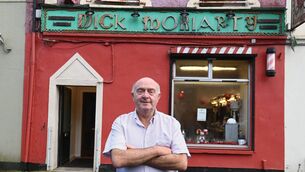FG admits flaw in Dutch-style health plan
Fine Gael said yesterday that replacing the current system of giving yearly fixed grants to hospitals with a payment per patient would lead to savings of 10% in hospital spending, or €80 million a year by 2014.
But a study in a Health Policy volume published last November said the system had led to a 7.8% increase in hospital spending, or an additional €1.1 billion a year in the first six years after its introduction in the Netherlands.
It found the model also led to a strong increase in the number of people who were unnecessarily admitted when hospitals and doctors themselves drove demand to keep up funding supplies.
And Fine Gael’s health spokesman Dr James Reilly yesterday admitted there was a danger of that happening here. Asked if hospitals would unnecessarily admit patients to gain funding, he said: “Yes you’re absolutely right. There is always a danger in that.”
The only safeguard he could offer is the Health Information and Quality Authority (HIQA) and National Treatment Purchase Fund (NTPF) would prevent this from happening.
“There is a range of people there to put a brake on this. Because that is the danger when the money follows the patient system, that you get churning, and we don’t want that obviously,” he said.
The journal criticised the Dutch system because its budgets were “volume- based and open-ended”.
Similarly, Fine Gael’s health policy, FairCare, does not propose caps on hospital budgets.
But Dr Reilly yesterday admitted this would have to be looked at after the scheme is introduced: “We’ll be introducing it over a period of a couple of years and we’ll be observing that. If there’s a necessity for a cap,” he said.
After the Dutch government introduced the system in 2001, there was an “internationally exceptional increase” in hospital admissions of 3% per year and an acceleration of an “explosive increase” in day-care admissions, said the journal.
It said there was a “strong growth in admission without a medical diagnosis or coded procedure” because of a “loosening of admission criteria” and “supply or supplier-induced demand”.












